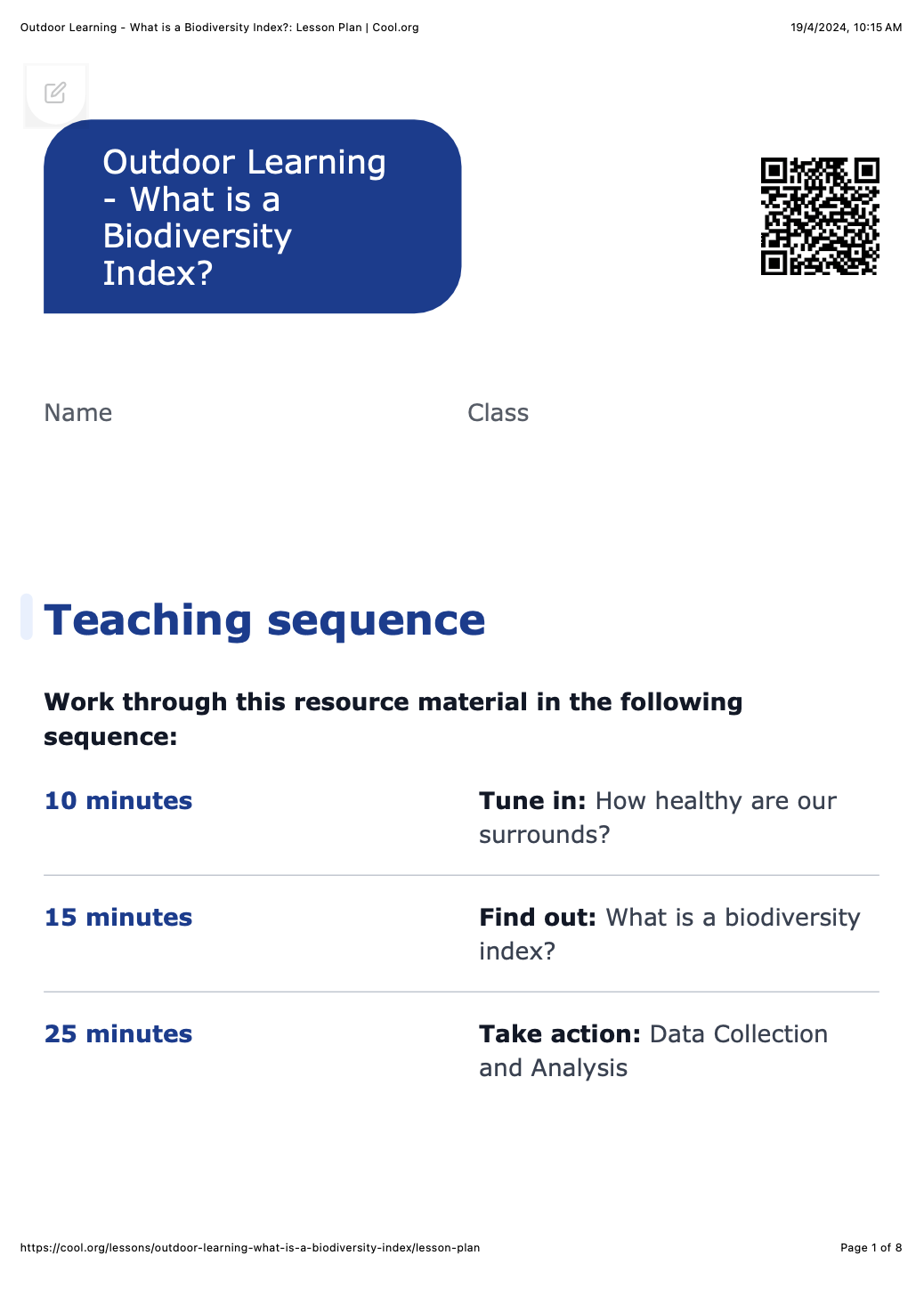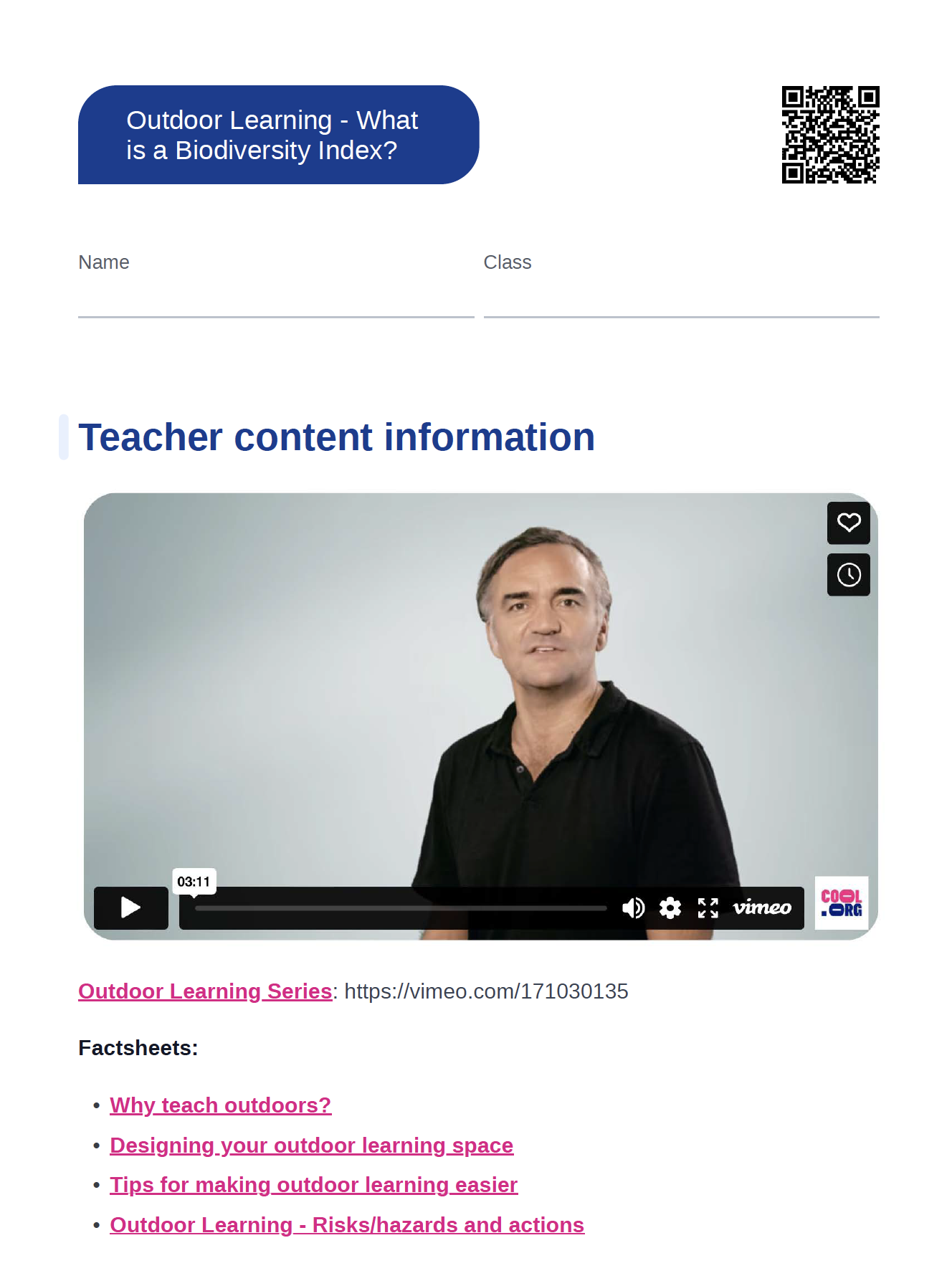Lesson summary
Students collect data about the biodiversity of their schoolyard. Using this data they calculate the biodiversity index and suggest ways to increase the biodiversity of their school.
Learning intentions:
Students will...
- solve problems involving the surface area and volume of composite objects using appropriate units.
Success criteria:
Students can...
- identify composite objects around the schoolyard
- apply appropriate mathematical theories to solve for volume.
Lesson guides and printables
Curriculum links
Select your curriculum from the options below.
Lesson details
Curriculum mapping
Australian Curriculum (v9.0) content descriptions - Geography
Students learn to:
- the human-induced changes that challenge the sustainability of places and environments (AC9HG10K01)
General capabilities: Critical and Creative Thinking.
Cross-curriculum priority: Sustainability.
Relevant parts of Year 10 achievement standards:
By the end of Year 10, students explain how the interactions of people and environmental processes at different scales change the characteristics of places.
Resources required
- Census or Sample – Data Collection – one copy per student
- Census or Sample Data Analysis – Your School – one copy per student
Skills
This lesson is designed to build students’ competencies in the following skills:
- creativity
- critical thinking
Additional info
Level of teacher scaffolding: Medium - oversee activity and facilitate discussion.
This lesson is designed to be taught outside. It contains all the tools required for students to reap the benefits of being outdoors while learning the outcomes of the Australian Curriculum. By spending time outdoors and connecting to nature, students are more likely to care for and conserve nature as adults.
This is an original Cool+ lesson.
Related professional learning
Introduction to Secondary STEM
Quick summary: This course will help you understand the essential foundations of STEM teaching and learning and provide opportunities to help build knowledge, skills and confidence to take on STEM in your classroom.



Welcome back!
Don't have an account yet?
Log in with:
Create your free Cool.org account.
Many of our resources are free, with an option to upgrade to Cool+ for premium content.
Already have an account?
Sign up with:
By signing up you accept Cool.org's Terms and Conditions(Opens in new tab) and Privacy Policy(Opens in new tab).